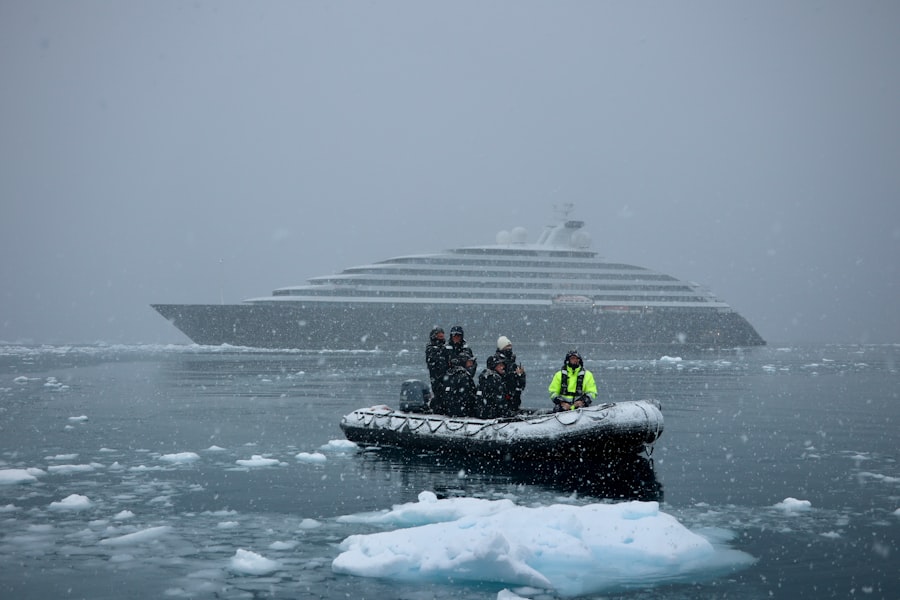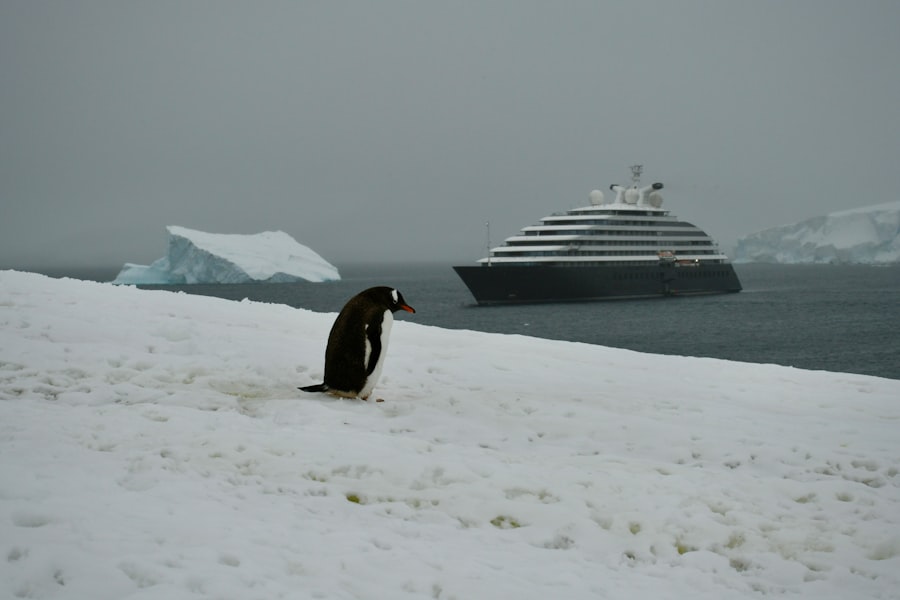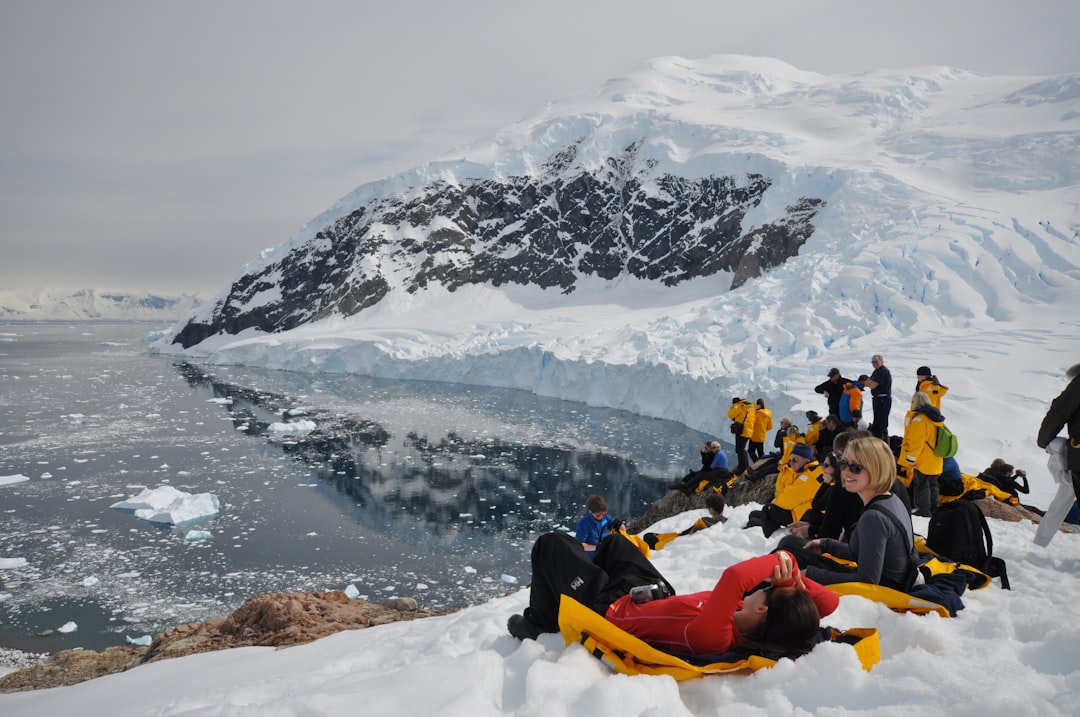The Drake Passage, a body of water that separates South America from Antarctica, is renowned for its tumultuous seas and breathtaking vistas. Stretching approximately 600 miles, this passage is often regarded as one of the most challenging maritime routes in the world. Named after the English explorer Sir Francis Drake, who navigated these waters in the late 16th century, the Drake Passage serves as a gateway for adventurers seeking to explore the icy wonders of Antarctica.
Its unpredictable weather patterns and strong currents have earned it a reputation that both intimidates and excites those who dare to traverse its depths. For many, the journey through the Drake Passage is not merely a means to an end but an integral part of the Antarctic experience. The passage is characterized by its dramatic landscapes, where towering waves crash against rocky outcrops, and seabirds soar overhead.
As travelers embark on their expedition, they are often filled with a sense of anticipation and wonder, knowing that they are about to witness one of nature’s most awe-inspiring regions. The Drake Passage is not just a physical barrier; it is a threshold into a world that few have the privilege to explore.
Key Takeaways
- The Drake Passage is a treacherous body of water between South America and Antarctica, known for its rough seas and unpredictable weather.
- When preparing for an expedition to Antarctica, it’s important to pack warm clothing, waterproof gear, and sturdy footwear for outdoor activities.
- Sailing through the Drake Passage can be a thrilling and challenging experience, with opportunities to spot various species of wildlife such as penguins, seals, and whales.
- Exploring Antarctica offers unique opportunities to visit landing sites, engage in activities like hiking and kayaking, and witness the breathtaking beauty of the continent.
- Safety and emergency procedures are crucial in Antarctica, where extreme weather conditions and remote locations can pose significant risks to expedition participants.
Preparing for the Expedition: What to Pack
Preparation for an expedition through the Drake Passage requires careful consideration of both personal needs and environmental conditions. Travelers are advised to pack layers of clothing, as temperatures can fluctuate dramatically throughout the day. A waterproof outer layer is essential to protect against the elements, while thermal undergarments provide warmth during chilly excursions.
Sturdy, insulated boots are also crucial for navigating the icy terrain of Antarctica, ensuring comfort and safety during landings. In addition to clothing, adventurers should consider packing essential gear such as binoculars for wildlife watching, a high-quality camera to capture stunning landscapes, and personal items like sunscreen and lip balm to protect against harsh UV rays. A reusable water bottle is also recommended to stay hydrated while minimizing plastic waste.
By thoughtfully assembling their gear, travelers can enhance their experience and ensure they are well-prepared for the challenges that lie ahead.
The Journey: Sailing through the Drake Passage

As the expedition vessel sets sail from Ushuaia, Argentina, travelers often feel a mix of excitement and trepidation about crossing the Drake Passage. The journey typically begins with calm waters, allowing passengers to acclimate to life aboard the ship. However, as they venture further into the passage, they may encounter the notorious swells that have made this route famous.
The ship’s crew is well-trained to navigate these conditions, providing reassurance to passengers as they brace themselves for the adventure ahead. During the crossing, travelers are treated to stunning views of the surrounding ocean and sky. The vast expanse of water is often dotted with seabirds gliding gracefully above the waves, while occasional glimpses of marine life can be spotted below.
Passengers may find themselves captivated by the sheer beauty of their surroundings, even as they navigate through rough seas. The experience of sailing through the Drake Passage becomes a memorable part of their journey, one that highlights both the power and majesty of nature.
Wildlife Encounters: Spotting Penguins, Seals, and Whales
| Wildlife | Encounter Frequency | Best Time to Spot |
|---|---|---|
| Penguins | High | Early morning or late afternoon |
| Seals | Moderate | During low tide |
| Whales | Low | During migration seasons |
One of the most exhilarating aspects of an expedition through the Drake Passage is the opportunity to encounter diverse wildlife. As travelers approach Antarctica, they may begin to spot various species of seabirds soaring overhead, including albatrosses and petrels. These magnificent birds are often seen gliding effortlessly on ocean breezes, providing a glimpse into the rich biodiversity that thrives in these frigid waters.
Upon reaching Antarctica’s shores, travelers are greeted by the sight of playful penguins waddling across the ice. Species such as Gentoo and Adelie penguins are commonly observed during landings, offering visitors a chance to witness their charming antics up close. Seals basking on ice floes add to the spectacle, while whale sightings—such as humpbacks or orcas—can leave passengers in awe as these majestic creatures breach the surface.
Each wildlife encounter serves as a reminder of the delicate balance of life in this remote region and underscores the importance of conservation efforts.
Exploring Antarctica: Landing Sites and Activities
Once travelers have crossed the Drake Passage and arrived in Antarctica, they are met with a landscape that feels otherworldly. The expedition itinerary typically includes visits to various landing sites, each offering unique opportunities for exploration. Locations such as Deception Island and Neko Harbor provide stunning backdrops for hiking and photography, while others may feature historical sites or research stations that offer insight into human endeavors in this extreme environment.
Activities during landings can vary widely, from guided hikes across glaciers to kayaking in icy waters. Each excursion allows travelers to immerse themselves in the breathtaking beauty of Antarctica while learning about its geology and ecology from knowledgeable guides. The chance to step foot on this pristine continent is a profound experience that fosters a deep appreciation for its natural wonders and fragility.
Climate and Weather in Antarctica

Antarctica’s climate is characterized by extreme conditions that can change rapidly. The continent experiences long periods of daylight during summer months, with temperatures ranging from mild near the coast to frigid inland. Travelers should be prepared for sudden weather shifts, including snowstorms and high winds that can impact outdoor activities.
Understanding these climatic nuances is essential for ensuring safety and comfort during an expedition. Despite its harsh environment, Antarctica’s climate plays a crucial role in shaping its unique ecosystems. The cold temperatures help preserve its ice sheets and glaciers, which are vital indicators of global climate change.
As travelers explore this frozen landscape, they gain insight into how climate affects not only Antarctica but also the planet as a whole. This awareness fosters a sense of responsibility toward environmental stewardship and conservation efforts.
The History of Antarctic Exploration
The history of Antarctic exploration is rich with tales of bravery and perseverance. Early explorers such as Ernest Shackleton and Robert Falcon Scott faced unimaginable challenges in their quests to reach the South Pole. Their expeditions were marked by hardship and sacrifice, yet they contributed significantly to our understanding of this remote region.
The legacy of these pioneers continues to inspire modern adventurers who seek to follow in their footsteps. In addition to early exploration efforts, scientific research has played a pivotal role in shaping our knowledge of Antarctica. Over the years, numerous research stations have been established on the continent, allowing scientists to study its unique ecosystems and climate patterns.
This ongoing research not only enhances our understanding of Antarctica but also informs global discussions about climate change and environmental conservation.
Onboard Activities and Entertainment
Life aboard an expedition vessel traversing the Drake Passage is filled with opportunities for enrichment and entertainment. Passengers can participate in educational lectures led by experts in various fields, ranging from marine biology to glaciology. These presentations provide valuable context for what travelers will experience during their landings and foster a deeper appreciation for Antarctica’s complexities.
In addition to educational activities, onboard entertainment may include film screenings featuring documentaries about polar exploration or wildlife. Social gatherings allow passengers to share stories and experiences with fellow adventurers, creating bonds that often last long after the journey concludes. The combination of learning and camaraderie enhances the overall experience, making each moment aboard memorable.
Safety and Emergency Procedures
Safety is paramount during any expedition through challenging environments like the Drake Passage and Antarctica.
Before embarking on excursions, travelers receive briefings on safety protocols, including how to properly use life jackets and what to do in case of adverse weather conditions.
This vigilance ensures that any necessary adjustments can be made promptly to protect passengers during their journey. By prioritizing safety measures, expedition teams create an environment where travelers can fully immerse themselves in their adventure with peace of mind.
Sustainability and Environmental Conservation in Antarctica
As interest in Antarctic exploration grows, so does awareness of the need for sustainability and environmental conservation in this fragile ecosystem. Expedition companies are increasingly adopting practices aimed at minimizing their impact on the environment. This includes adhering to strict guidelines set forth by organizations such as the International Association of Antarctica Tour Operators (IAATO), which promotes responsible tourism practices.
Travelers are encouraged to engage in sustainable behaviors during their expeditions, such as minimizing waste and respecting wildlife habitats. Educational programs onboard often emphasize the importance of conservation efforts both in Antarctica and globally. By fostering a sense of stewardship among adventurers, these expeditions contribute positively to preserving one of Earth’s last great wildernesses for future generations.
Reflecting on the Expedition and its Impact
As travelers complete their journey through the Drake Passage and explore Antarctica’s breathtaking landscapes, they often find themselves reflecting on their experiences with a sense of gratitude and wonder. The challenges faced during their expedition serve as reminders of nature’s power and beauty while fostering a deeper appreciation for our planet’s delicate ecosystems. The impact of such expeditions extends beyond personal growth; they also contribute to broader conversations about climate change and environmental conservation.
By witnessing firsthand the effects of climate change on Antarctica’s ice sheets and wildlife, travelers return home with renewed motivation to advocate for sustainable practices in their own lives. Ultimately, journeys through the Drake Passage not only create lasting memories but also inspire individuals to become stewards of our planet’s future.
Embarking on a Drake Passage to Antarctica cruise is a thrilling adventure that offers breathtaking views and unforgettable experiences. For those interested in learning more about the unique challenges and wonders of this journey, you might find the article on MyGeoQuest insightful. It delves into the intricacies of navigating the Drake Passage and the stunning landscapes that await travelers in Antarctica. To explore this further, check out the related article on MyGeoQuest by visiting
